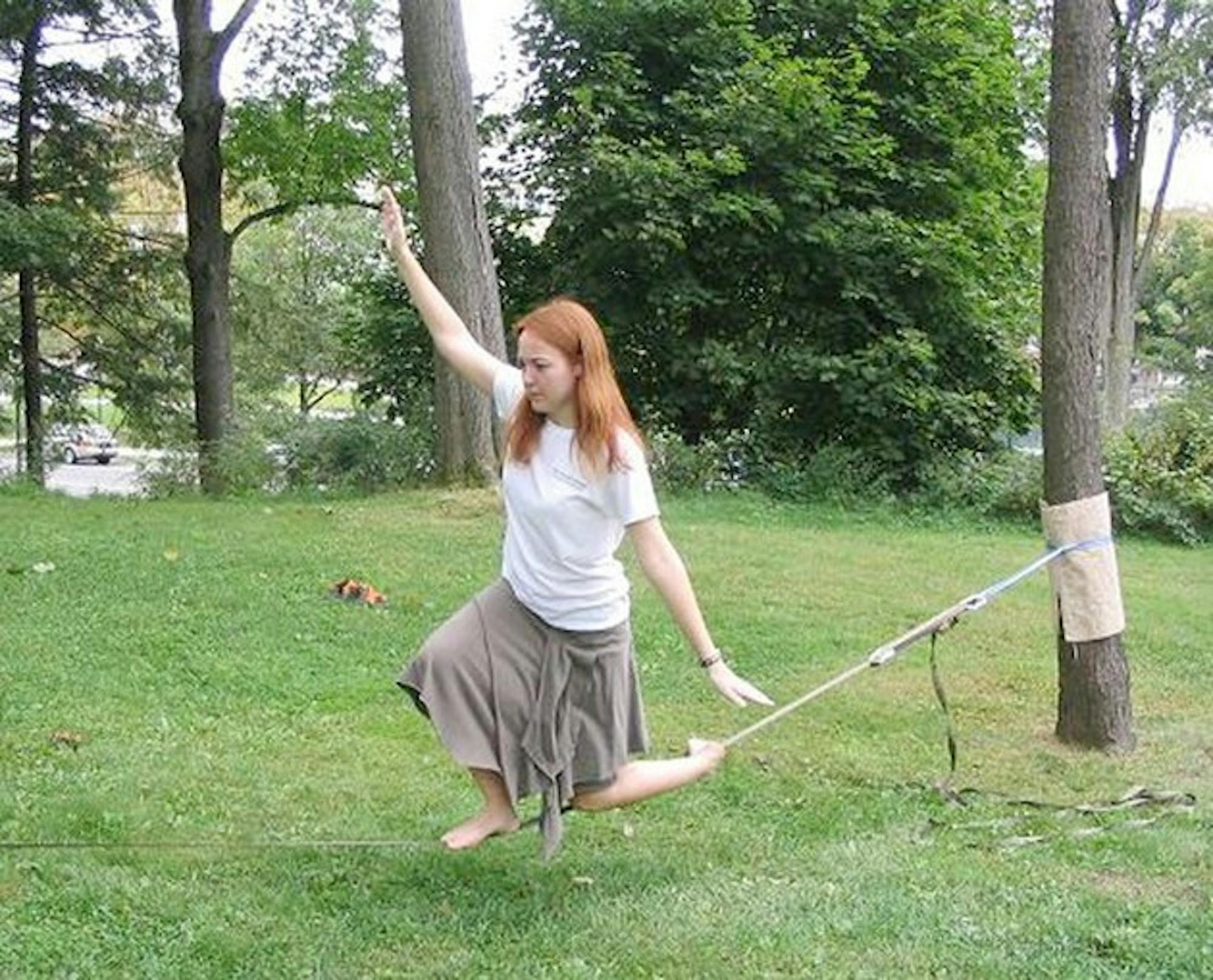Mella and Gilbert practice what look like yoga poses on the rope, as well as other motions such as jumping onto the rope, bouncing on one foot on the rope and tandem slacklining, in which both slackliners balance on the rope at the same time.
Mella began slacklining at the University of Northern Colorado when one of her close friends took it up to improve his balance for snowboarding. She brought her equipment to Dartmouth and encouraged other graduate students in the physics department to try it.
"Initially it seems like it is really difficult to learn, but I think it is fairly easy to see progress by your second time out," Mella said. "The first time you step on a line, it just starts to shake uncontrollably, but once you jump on there and just start, you are pretty much ready to go."
She said that the difficulty of learning how to slackline depends on one's natural balance. Mella's brother, for example, walked, turned and walked backwards on his first attempt, while it took Mella much longer to learn the same tricks.
Gilbert first saw slackliners when she was an undergraduate at Davidson College, but never tried until this year. Mella, the only other female Physics Ph.D. student in Gilbert's year, convinced her to give the sport a chance and the two slacklined approximately twice a week until the weather became prohibitively cold. Mella said that she hopes to set up a slackline inside somewhere during the winter to continue practicing.
In addition to recruiting Gilbert, Mella encouraged other physics students and even one of her professors to try out the sport.
As the hardest part can be actually getting on the rope, beginner slackliners often utilize an additional rope secured over their heads that they can hold. Mella and Gilbert, however, said they always offer newcomers a shoulder to lean as well as basic instruction.
"We enjoy introducing new people to slacklining. It's a fun activity; everyone should try it," Mella said.
Though slacklining in front of the Sphinx drew many stares, Mella and Gilbert said it also enabled them to meet members of the climbing club and curious onlookers.
"It is fun when people come up to talk to us. We had someone tell us that he was in the circus in Paris as a tightrope walker, which was really cool," Gilbert said.
Slacklining originated in the 1970s as a recreational activity and has since expanded to accommodate extreme trickliners.
More extreme tricks might include backflips or playing Frisbee with another person on the line, which becomes challenging when the person has to jump to catch it.
Highlining is another variation of the sport which involves walking a slackline at incredible heights. While many slackliners walk on lines about two or three feet off the ground, some of these adventurers anchor lines on buildings or between cliffs, usually with a harness to prevent serious injury.




